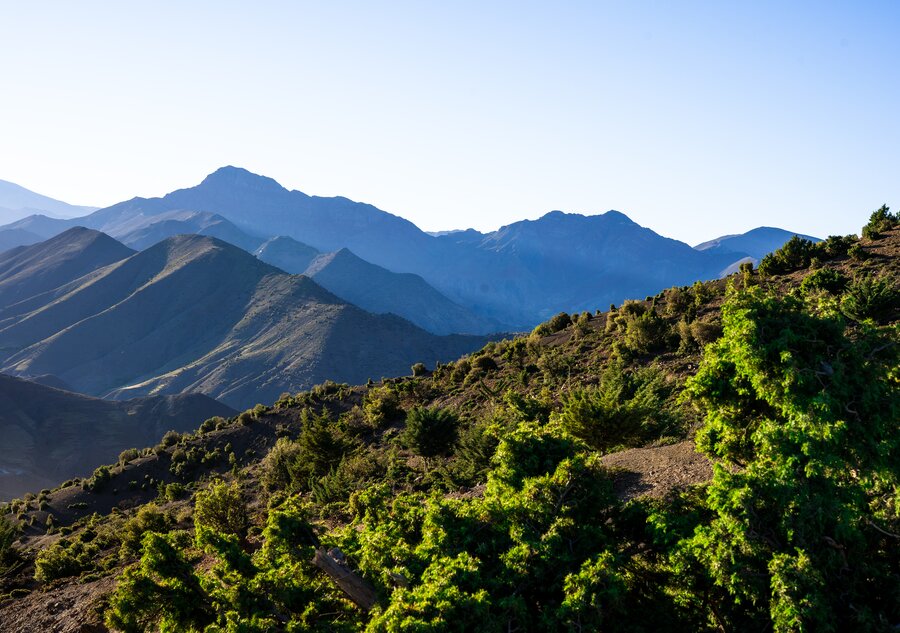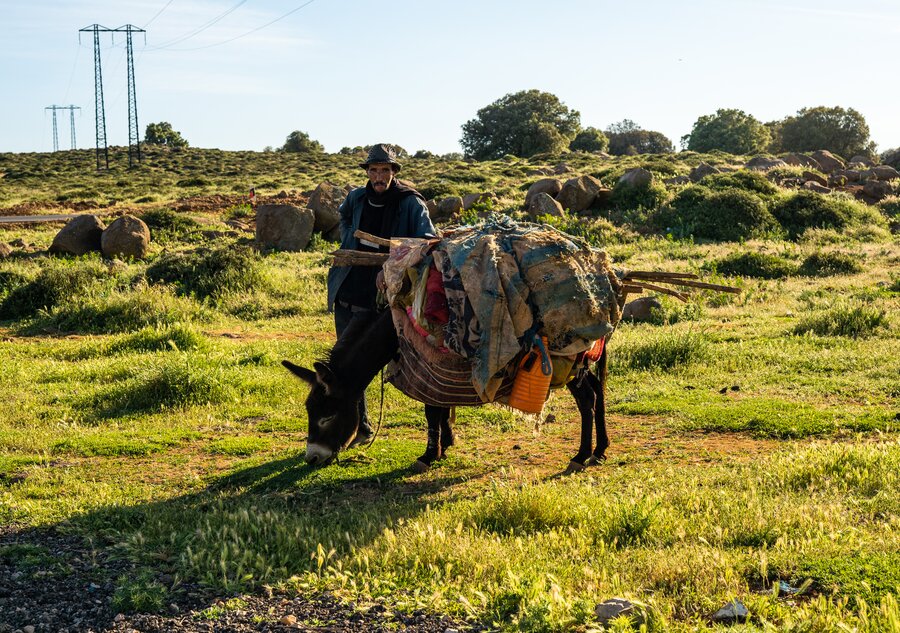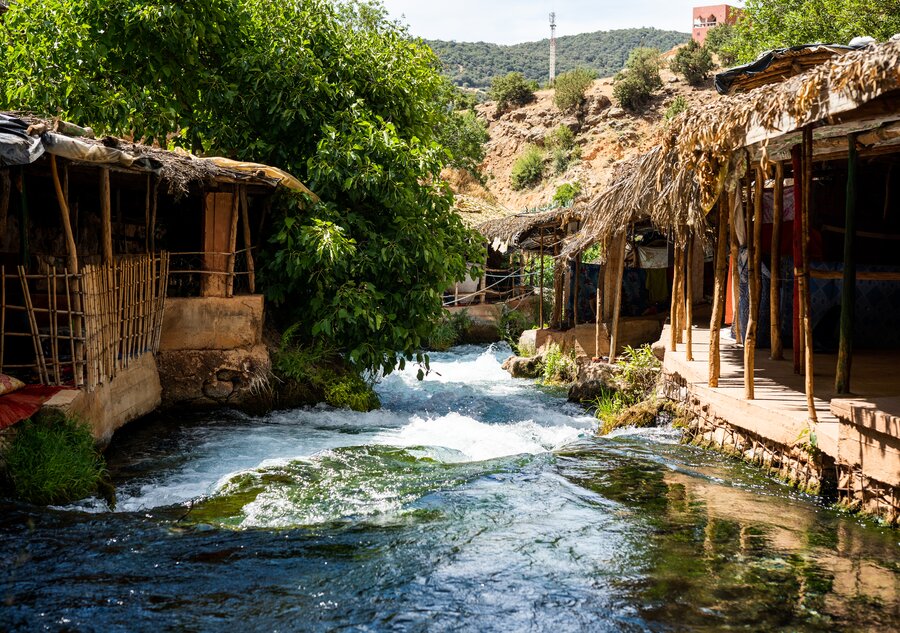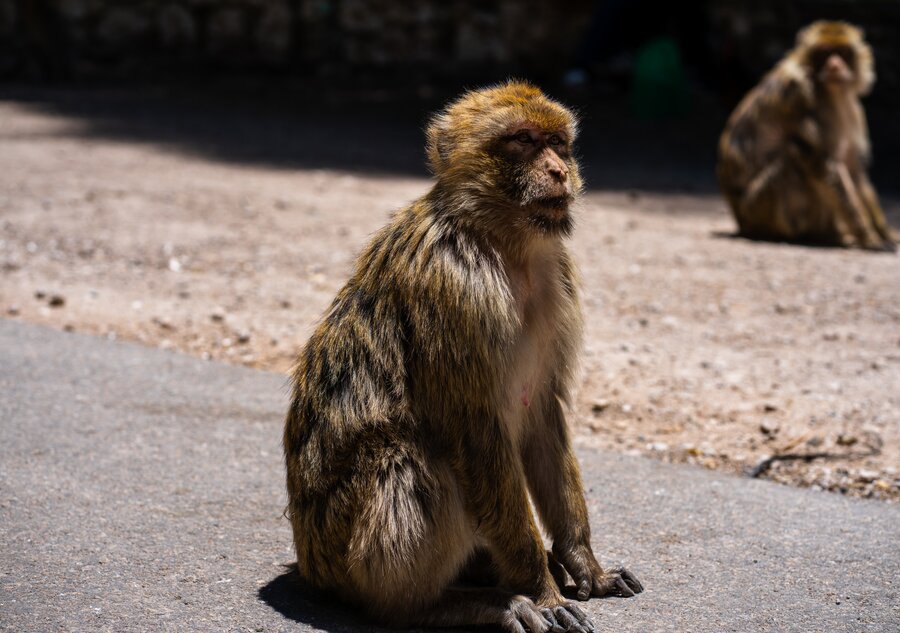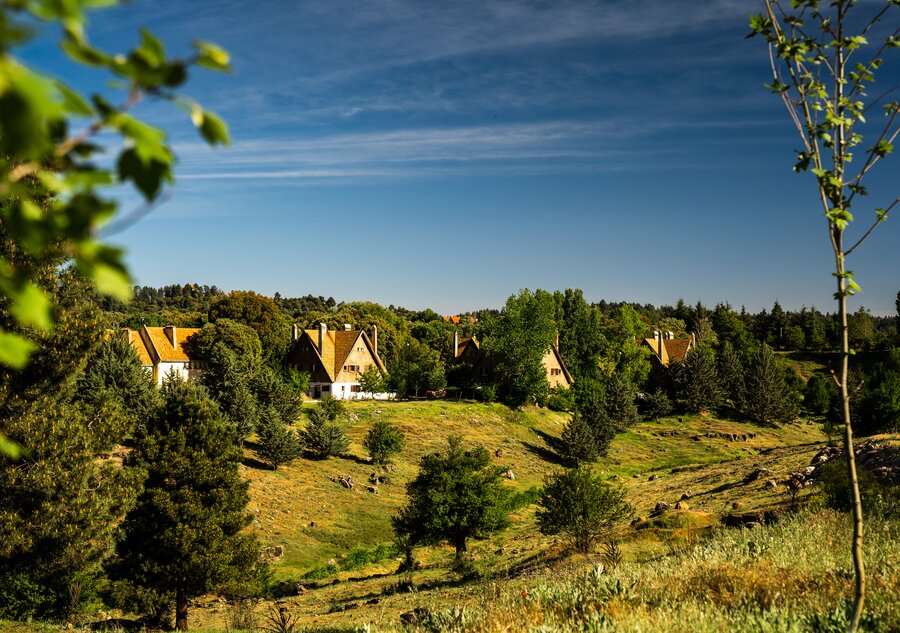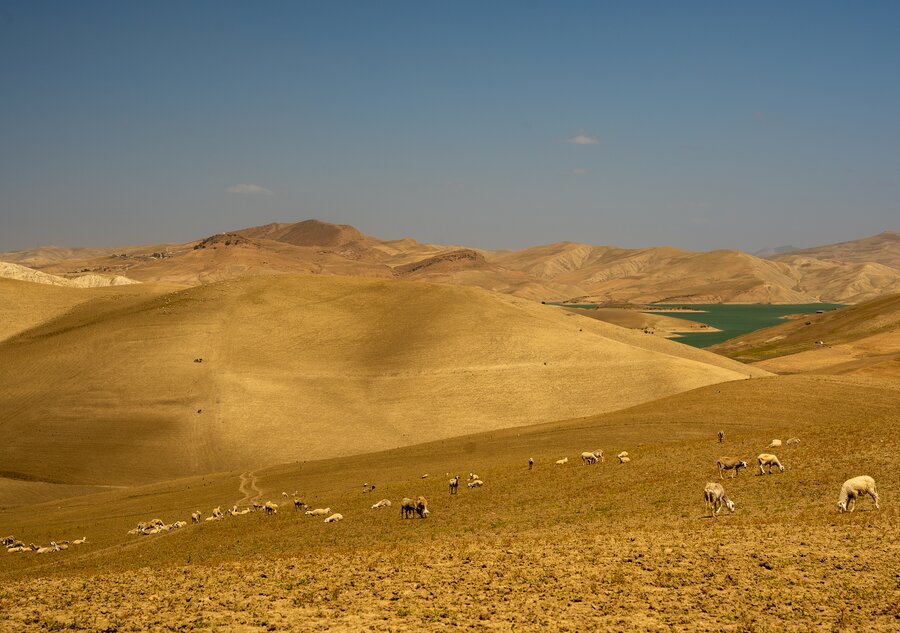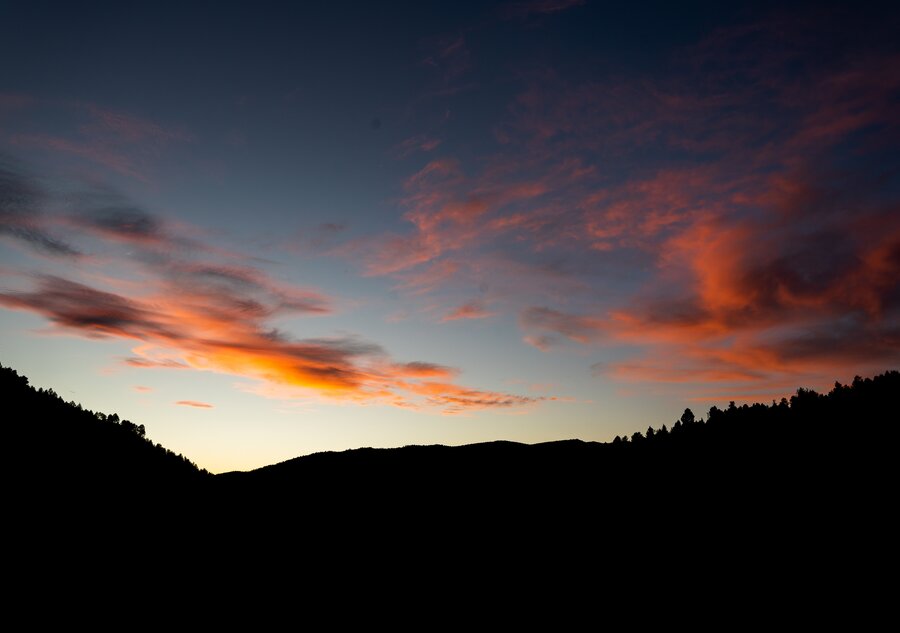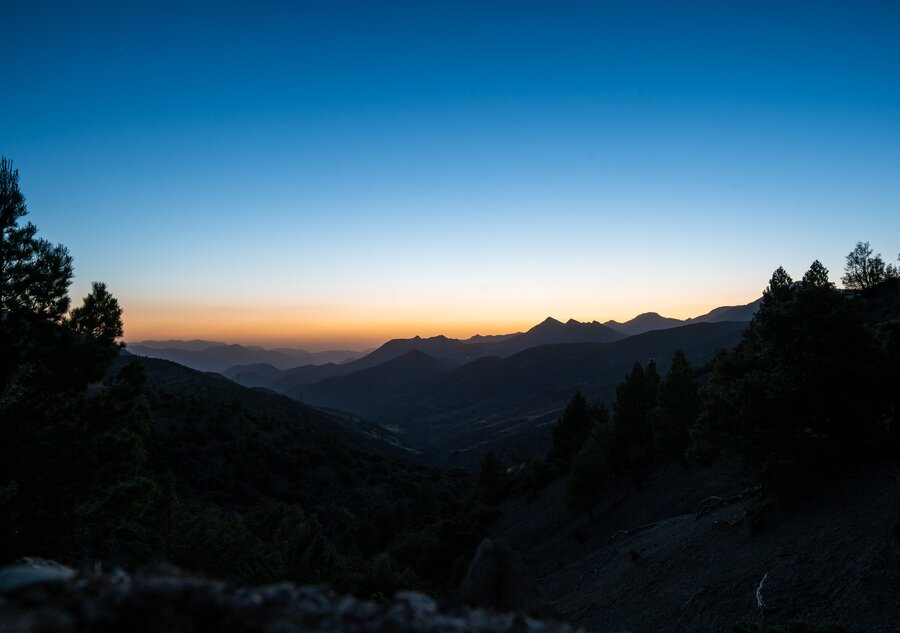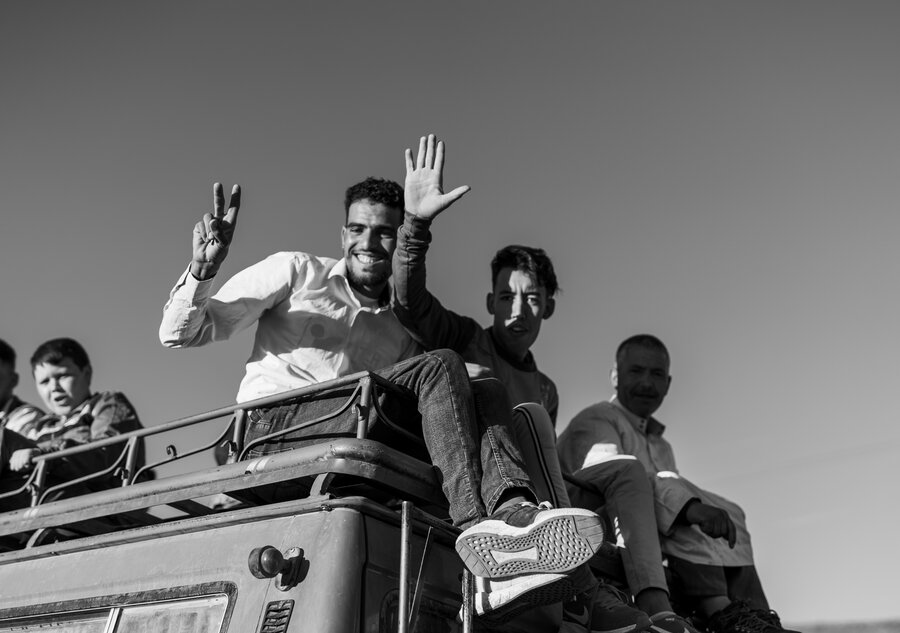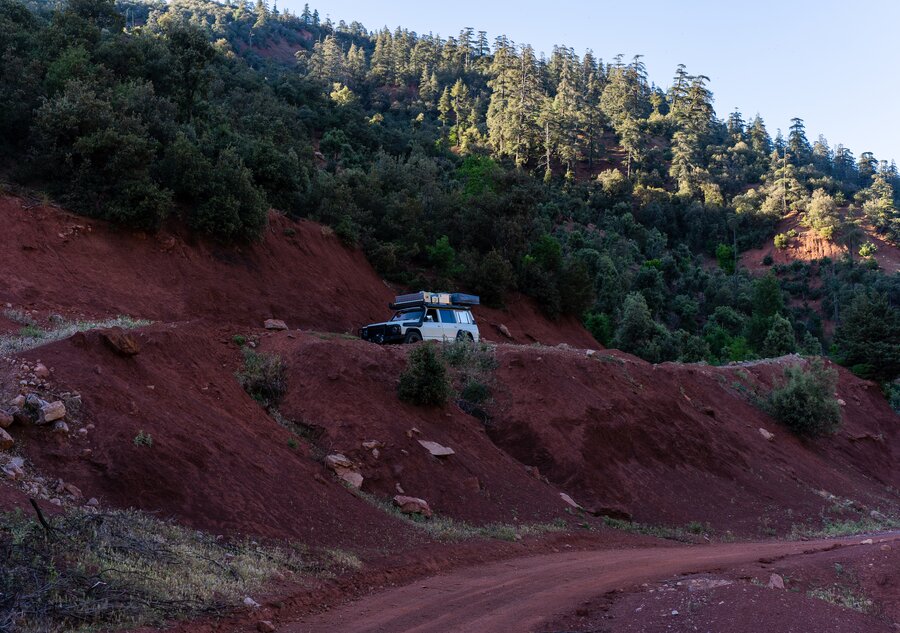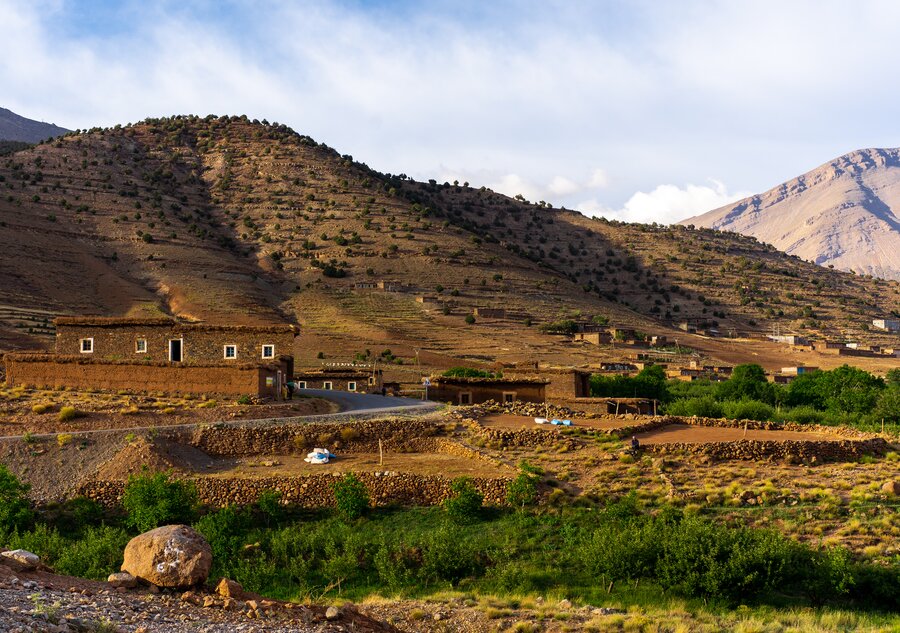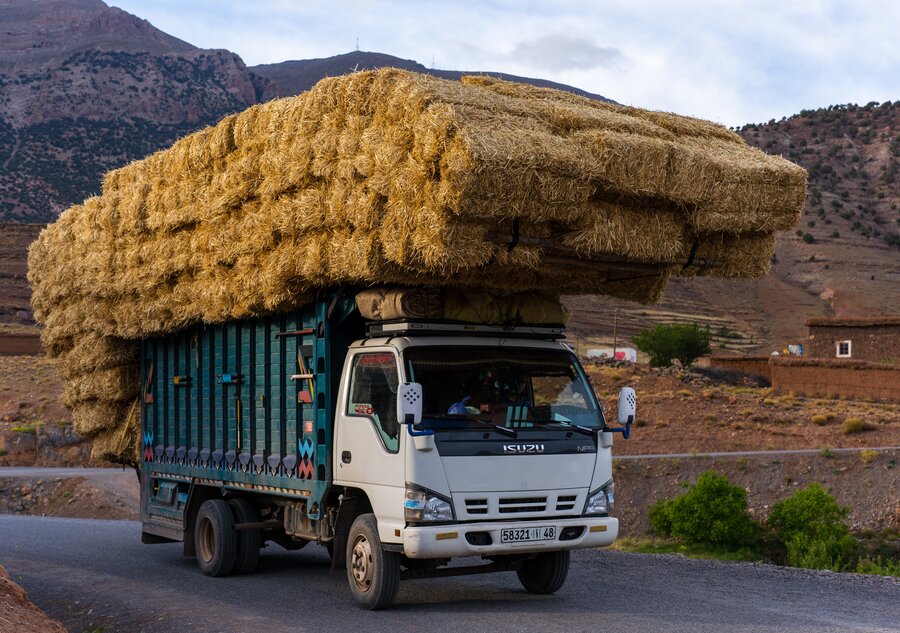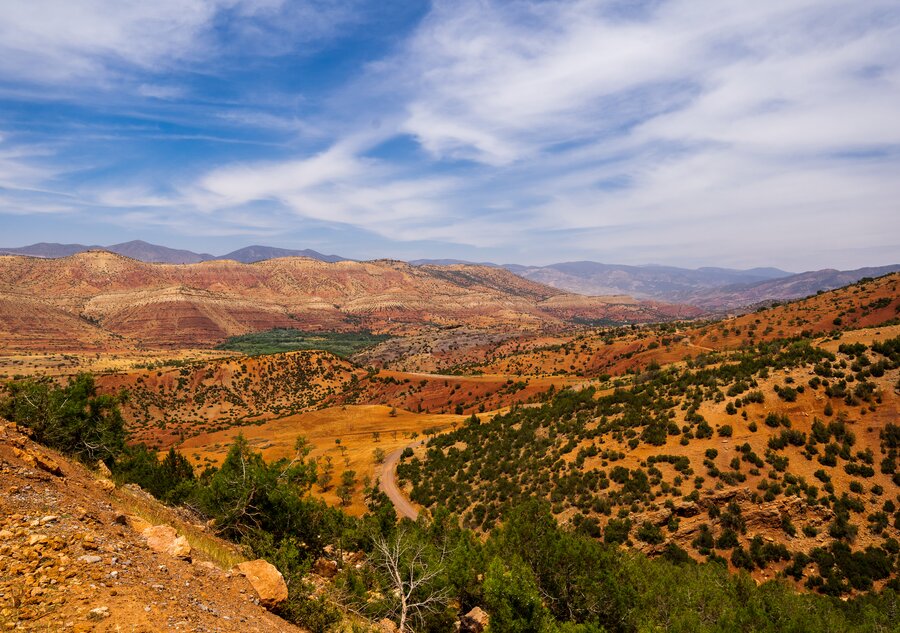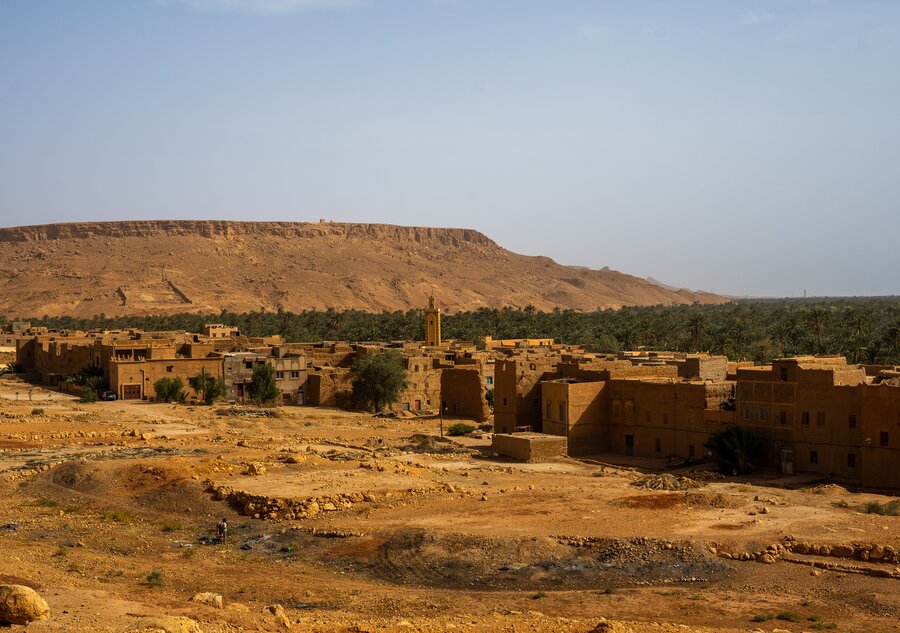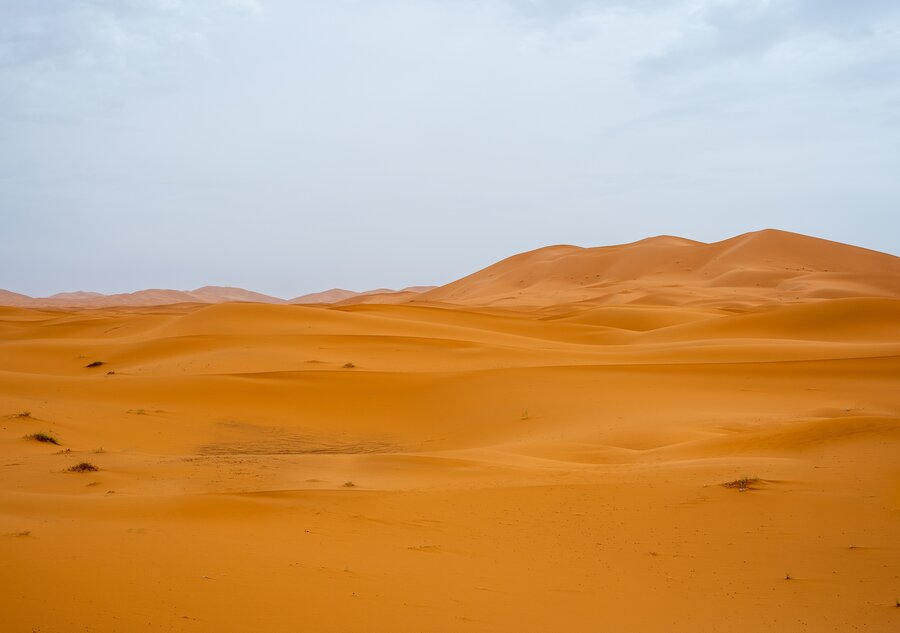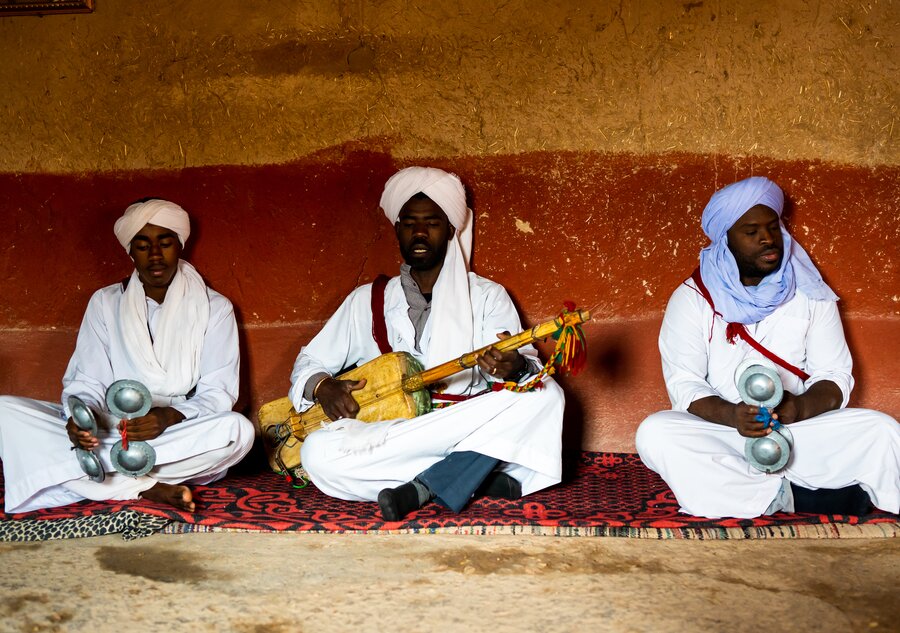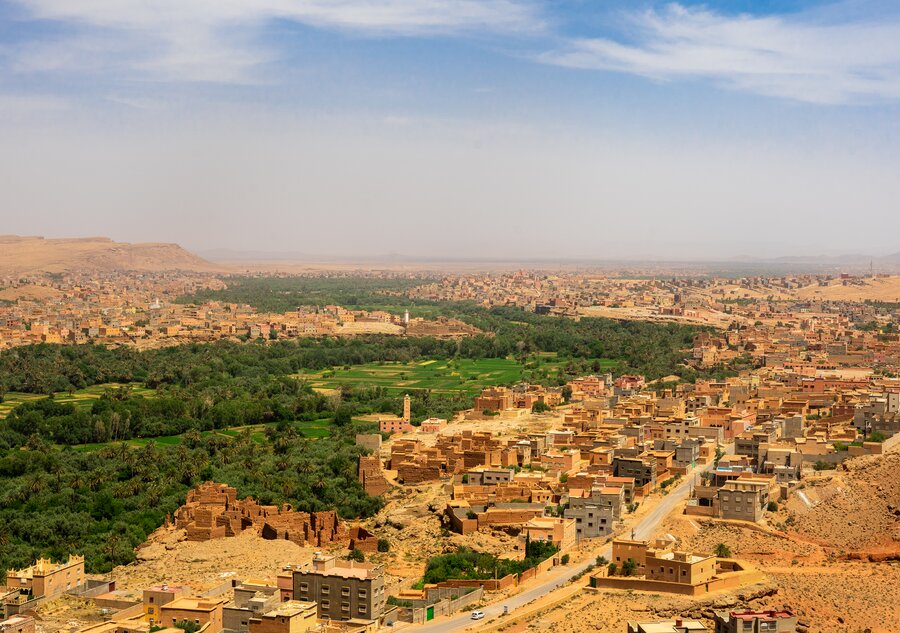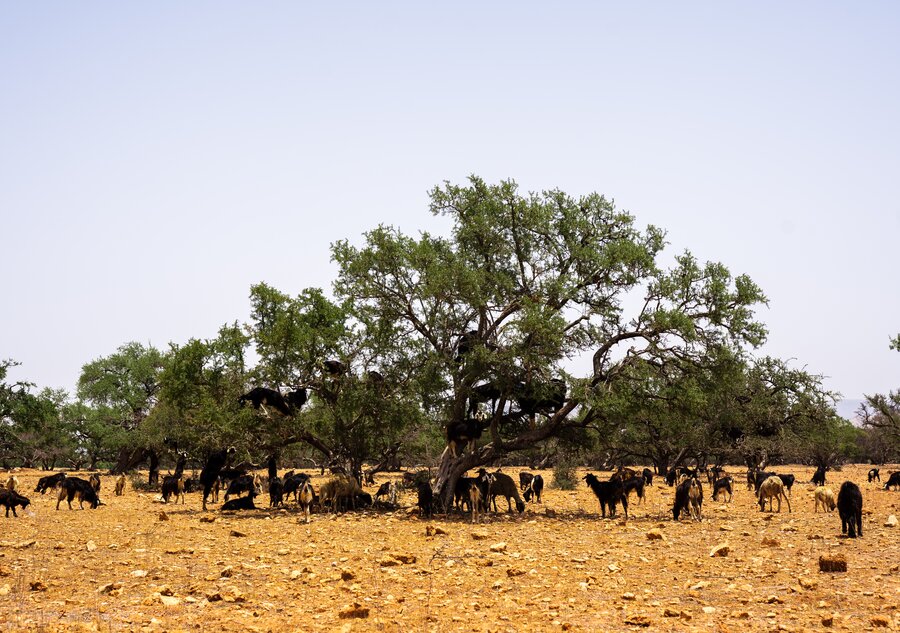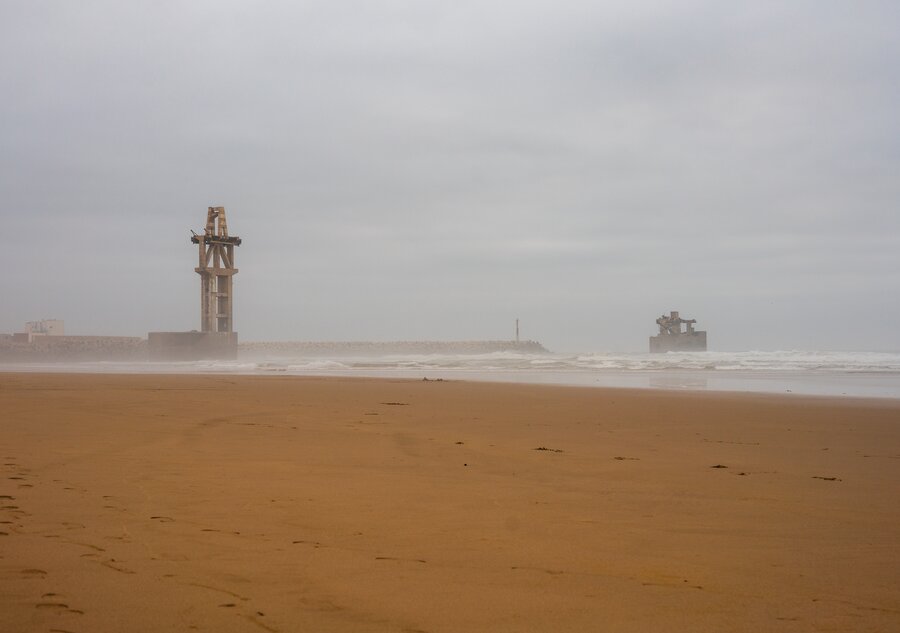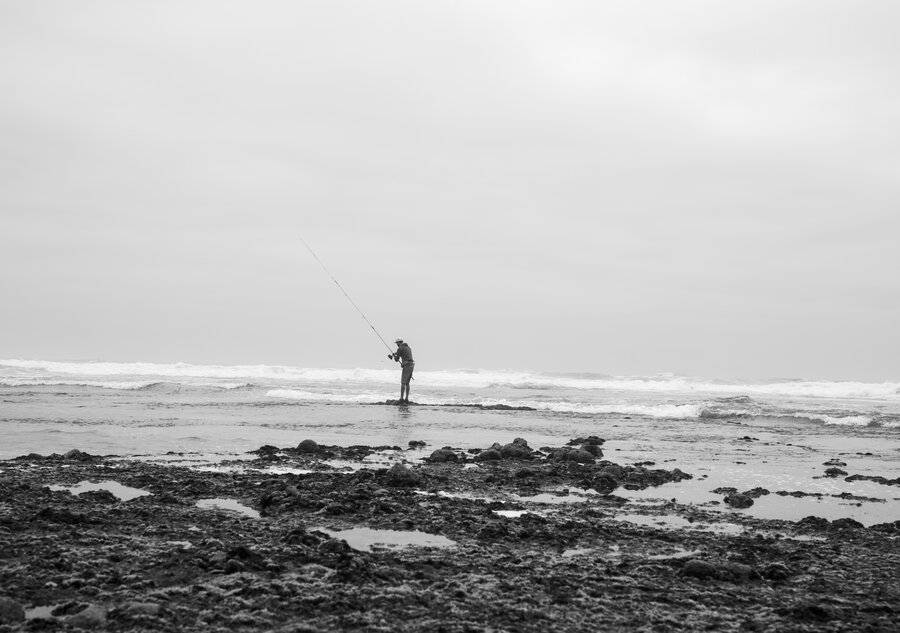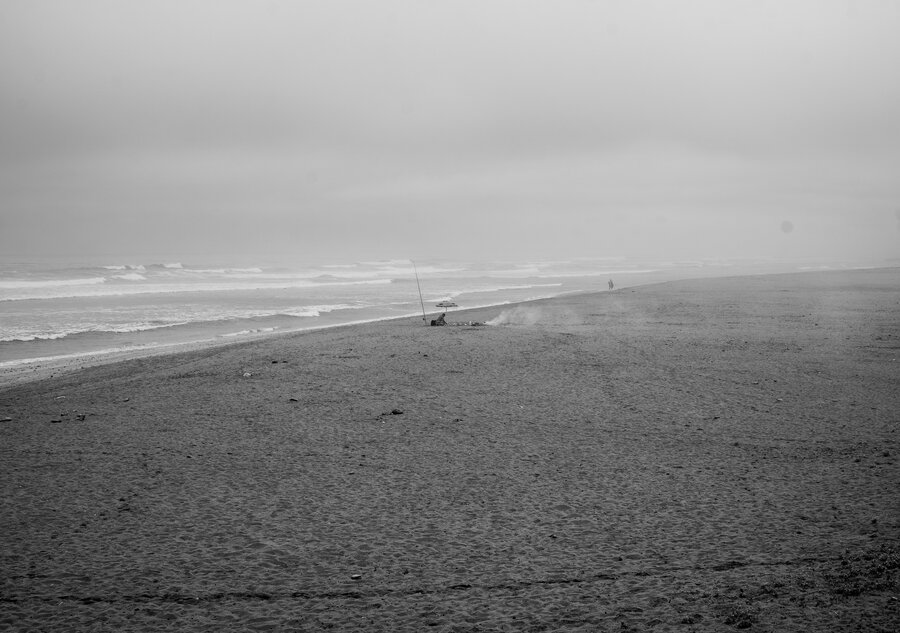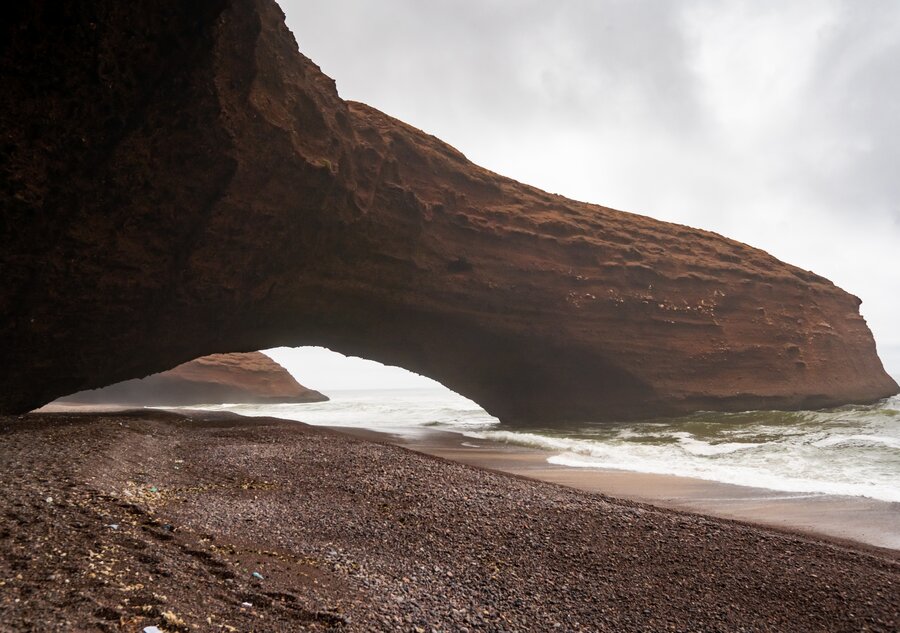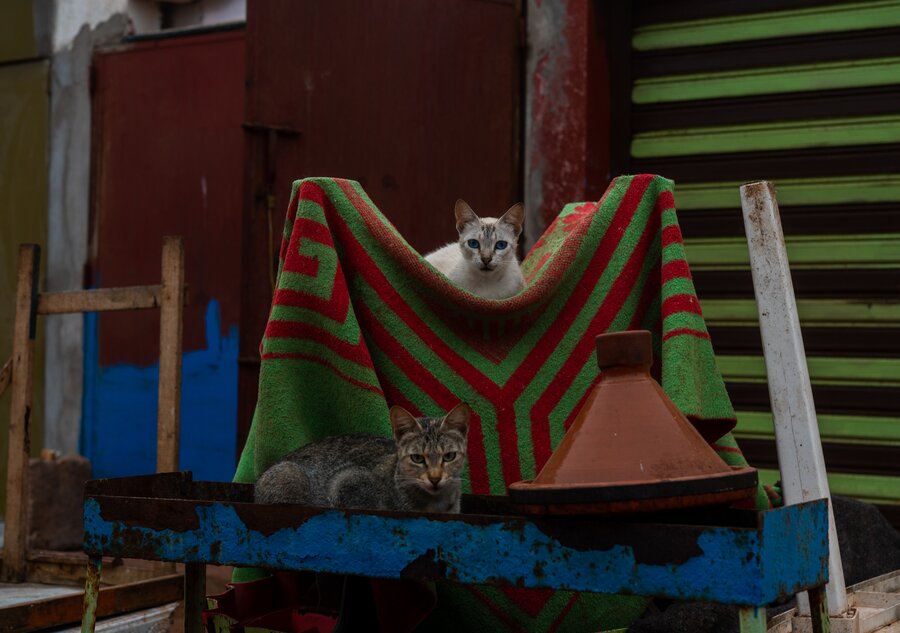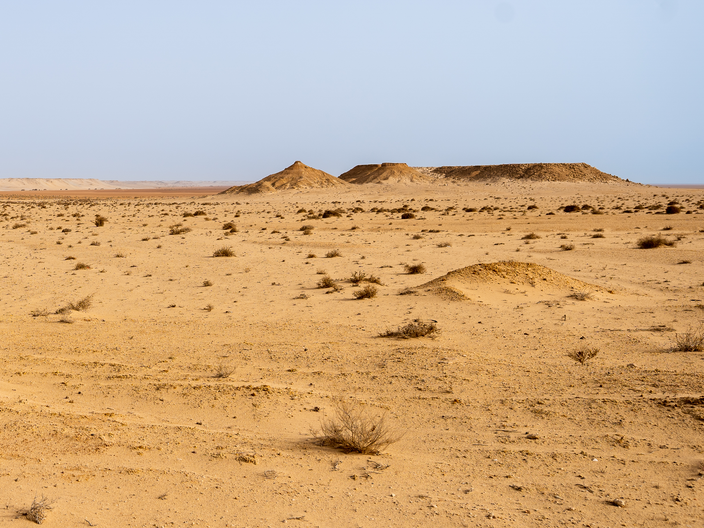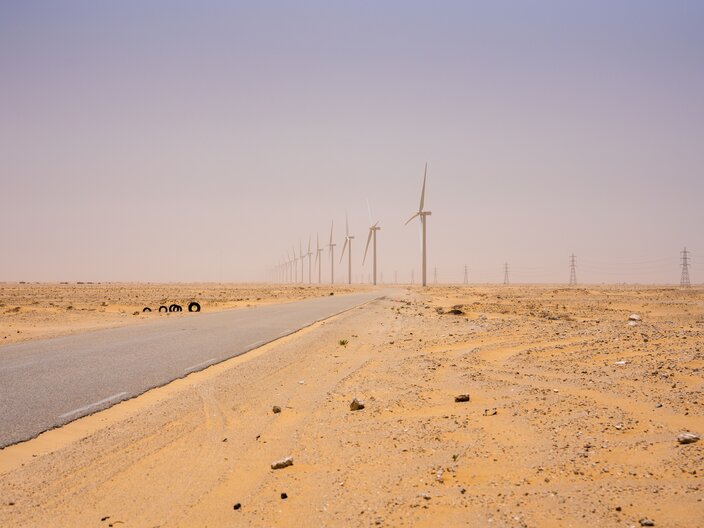In northern Morocco, the Rif Mountains stretch along the Mediterranean and are Morocco's primary mountain range. The area is characterized by agriculture. Most of the fields are cultivated with grain and hemp. The grain is used as fodder for the animals as well as to produce flour for humans. Hemp cultivation is one of the most important sources of income for much of the population, in addition to tourism. The export of hemp products secures many livelihoods and is therefore tolerated by the state and the police. Tourism focuses mainly on the city of Chefchaouen and associated day trips to the mountain area. The Berbers form the largest ethnic group, although now, they are predominantly sedentary and only partially nomadic. Typically, they live in close-knit social groups, organized in clans.









